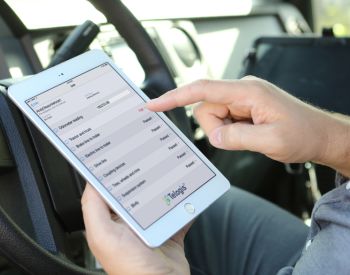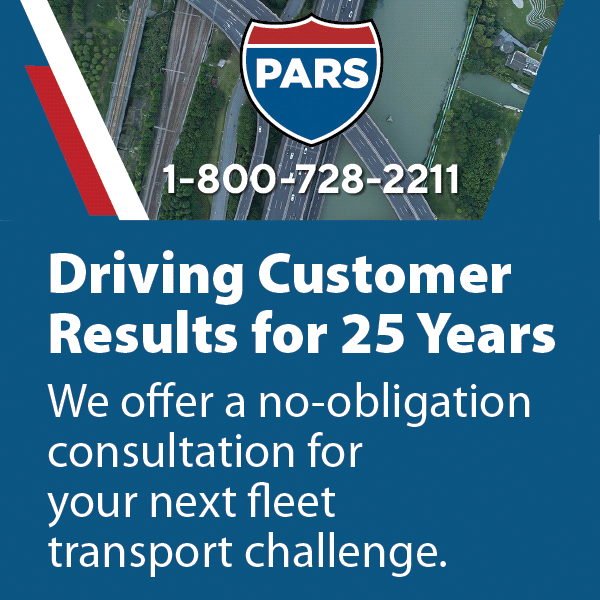
By Kelly Frey, VP Product Marketing, Telogis
It’s human nature – when we’ve been doing something the same way, day after day, year after year, it becomes a blind spot. We don’t stop to think about it unless something forces us to. That’s what’s happened when the new ELD mandate was announced, requiring mandatory adoption of electronic logging devices for hours of service (HOS) by December 18, 2017.
We have time to reach compliance – but there are significant advantages to jumping into the new technology sooner rather than later. Along with the HOS going digital, it’s time to rethink paper-based driver vehicle inspection forms (DVIRs) as well.
A daily chore for millions of commercial vehicle drivers, filling in DVIR slips by hand as part of their pre or post-trip inspection is just one of those compliance tasks that we didn’t argue about. The legislation demanded it and we just got it done.
While FMCSA compliance (Ruling 396.11) still requires DVIRs for commercial vehicle operators, the technology is now here to automate the process and turn it paperless.
The Telogis DVIR solution complies with FMCSA requirements, offering businesses significant advantages over their existing paper-based system.
- Faster inspections – Digital is just quicker. Forget trying to find a form (the right form), a pen (that works) and complete a paper form, often repeating the same information each time such as name and truck number. Even finding the last DVIR completed on something like a trailer can be time-consuming. The completed form then needs to be filed and reviewed by someone for safety defects.
- Minimize errors – Both drivers and back-office teams need to be able to read the DVIR; drivers need to sign off on the last report and back office needs to review the report, pass on to maintenance when necessary and file it. Handwritten reports and manually filing increase the chance of errors and time lost searching or purging reports.
- Easier reporting – The FMCSA requires that at least three months of DVIRs be available on request for the purpose of reviews and audits. With the FMCSA putting more effort into cracking down on safety-related issues and most CSA scores taking a hit due to vehicle maintenance problems, all businesses should be well-prepared for a review.
- Quicker turnaround on repairs – Defect reports are instantly routed to the service department for attention and scheduling repairs. Photos included with the report speed up investigation and isolating the fault. This is imperative for safety-related faults to minimize downtime.
- Use existing iOS or Android devices – No special hardware or inspection tools are required; drivers simply install the app on their smartphones and complete the electronic form. Photos can be used to verify visual inspection or included for the maintenance team, and the report can be signed off with a digital signature on the touchscreen.
- Create customized forms for specialized inspections – Different vehicles, trucks, trailers or equipment often require their own custom inspection form. Telogis DVIR makes it easy to duplicate and modify existing forms to suit, as well as attaching the necessary form to the asset being inspected – no more completing the wrong form.
- Make sure inspections get done – Drivers can be guilty of ‘pencil whipping’ forms when they’re in a hurry. That can really hurt your CSA score down the road. Telogis has developed a proprietary system of making sure drivers are actually doing a thorough inspection for the vehicle or equipment they’re operating. Using a combination of data, including location and vehicle dimensions, managers will soon know if drivers are cutting corners.
It’s not just about replacing one system with another – it’s about taking advantage of recent tech advancements to stay competitive in a rapidly changing industry.
Did You Know?
Businesses that have rolled out Mobile Enterprise Management (MEM) solutions reported:
– a 12 percent reduction in crashes
– a drop in speeding and harsh braking incidents
– a 25 percent savings in fuel costs
– a 30 percent reduction in idling
Electronic inspections – The savings stack up
Pause to think how many inspection reports your drivers complete each day. A single driver can be filling in several; one for each different vehicle, trailer or piece of equipment they operate. Multiply that by the number of drivers and the number of working days in the year, and you begin to appreciate the scale of how much a fleet can benefit from switching to electronic DVIRs.
It’s not just about saving time on inspections and data entry or money spent on stationery but improving the efficiency of your driver’s time – they would much rather be behind the wheel being productive than ploughing through paperwork.
Switching to electronic inspection forms is also easier with Telogis for several reasons.
· No special hardware – You don’t need an inspection tool or specialized hardware with Telogis DVIR. Just use any popular Apple or Android handheld device. This minimizes need for training or purchasing hardware.
· Cloud-based software – No changes to your current IT setup or software to install with our web-based/Software-as-a-Service (SaaS) solution. You can access all your DVIR reports by simply logging into your secure account from anywhere with an Internet connection.
· Everything you need – Dealing with multiple vendors can add significant overhead to your internal processes. Telogis is unique, providing fleets of any size with a comprehensive suite of applications that easily scale as companies grow. Fleet management, route planning, dispatch, work order management, navigation and compliance – all from one provider. API integration is also available to integrate with your existing software such as a maintenance ticketing program.
The future of DVIR – It’s here now
The future is here now: it’s a comprehensive Mobile Enterprise Management platform. Telematics is just the beginning, but connecting and optimizing vehicles and the work that’s being done is really where the true savings lie – not just with the data that’s being pulled from the connected vehicle. Utilizing apps and analytics or big data to mine for insights that can help identify trends, predict behavior, and empower decision makers is also a key trend.
More important is taking that data and turning it into real value by analyzing it and using the derived intelligence to gain a desired business outcome. The Internet of Things (IoT) is creating new use cases and possibilities that were inconceivable just a few years ago. At Telogis we often talk about ‘Connected Intelligence,’ which is the ability to gain insights and make better decisions by connecting everything in a mobile enterprise: vehicles, equipment, mobile devices and people, as well as the work itself: intelligent sensors and internal and external data feeds.
Collecting real-time location data and precise operational information in time increments from all of these sources is really the definition of big data – driving billions of data points every single day into our servers. Our customers rely on us to collect this data 24/7 securely and turn it into actionable information so they can make more informed business decisions to reduce costs, improve response times and meet customer expectations, all while keeping their people safe. We are at the epicenter of the Big Data revolution and we are excited about using these insights to help our customers transform the way they are doing business, and even develop new business models.



